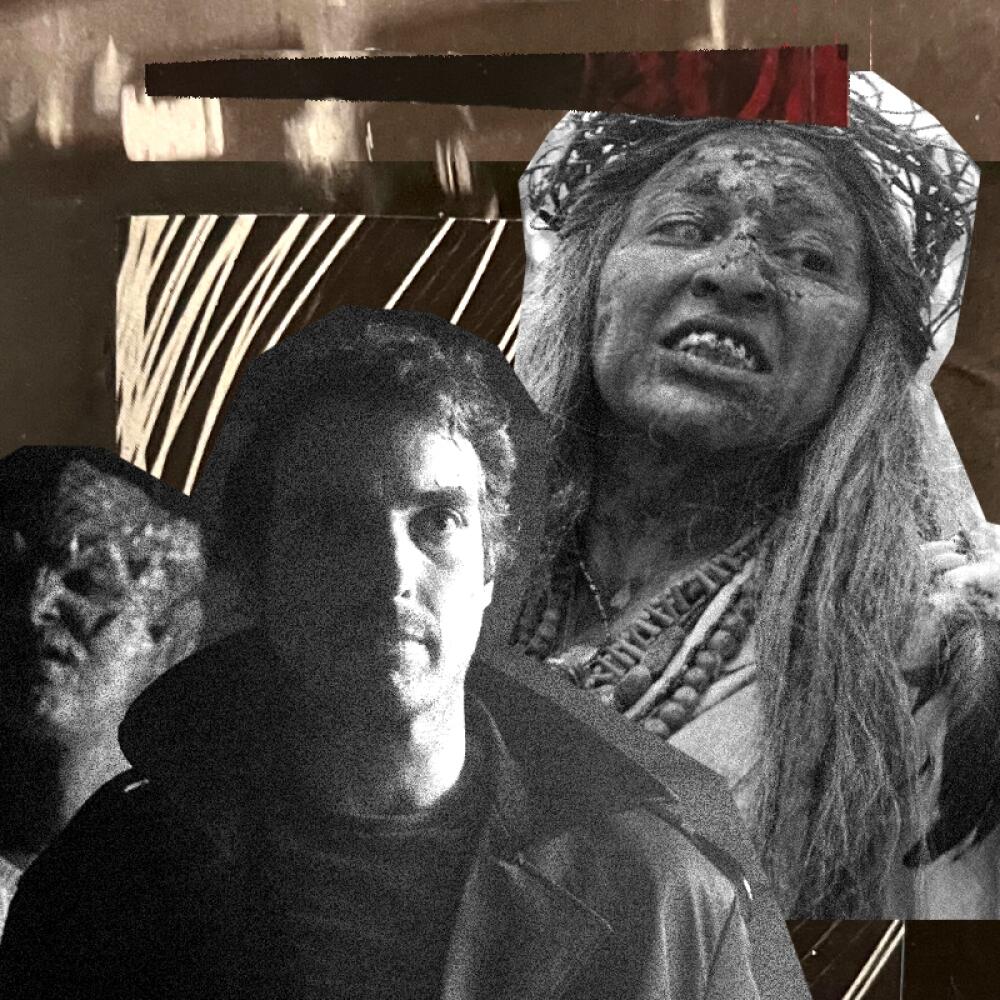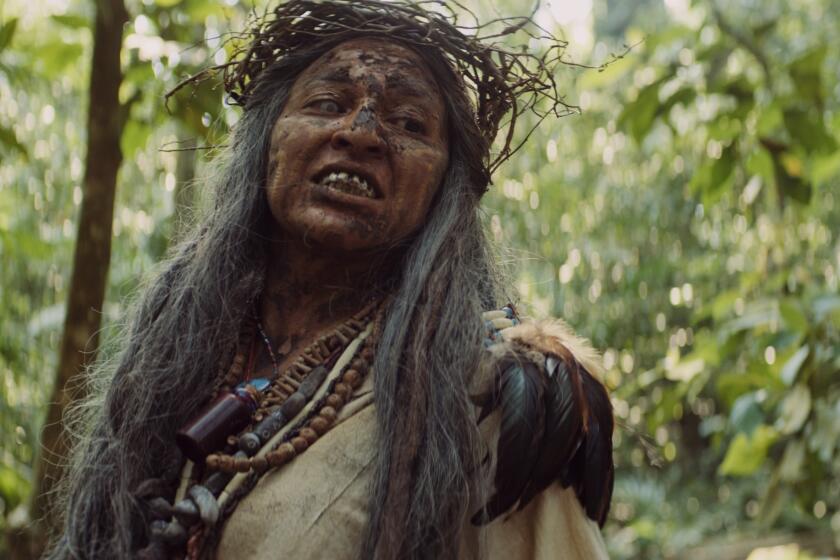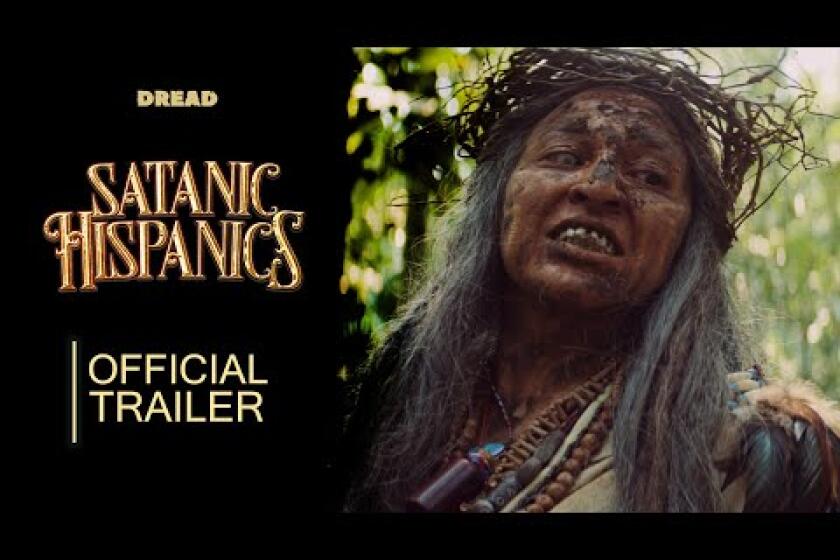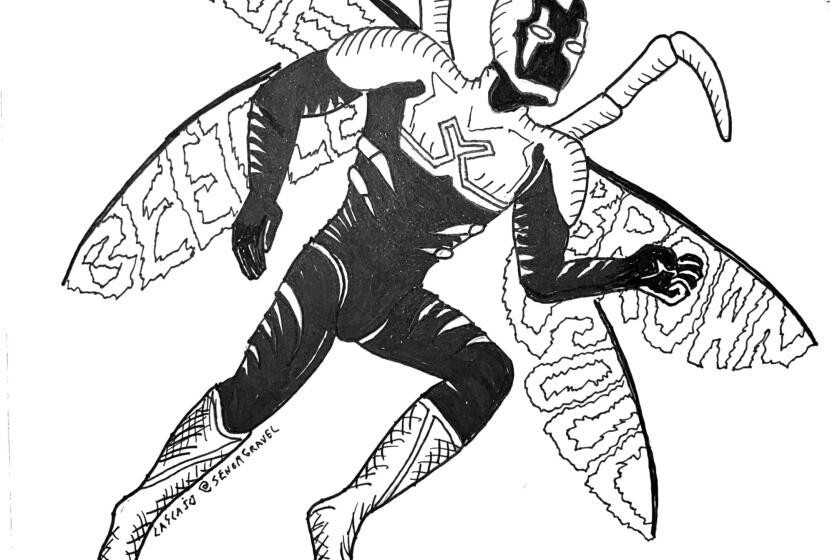
- Share via
The origin of “Satanic Hispanics,” the horror anthology released in theaters last Friday, points to Mike Méndez.
Not only is he one of the film’s directors — his episode, “The Traveler,” bookends the collection of short horror films — he also has become one of the biggest proponents of the horror anthology genre.
Méndez became known internationally with “Big-Ass Spider!,” a B-movie-style horror flick about a spider that attacks Los Angeles. Two years later, in 2015, he participated in “Tales of Halloween,” a horror anthology that turned him into a fan of working with other creatives in the genre.
In 2018, he met Alejandro Brugués while editing “Nightmare Cinema” — yet another horror anthology! — and realized that they shared the same sensibilities and sense of humor.
Mike Méndez, Alejandro Brugués y Gigi Saúl Guerrero hablan de la primera antología fílmica latina de terror cinematográfico
“When Epic Pictures called me about working on another anthology, I got in touch with Alejandro, who reminded me that we had talked about the possibility of bringing our Latino background into it,” said Méndez, in a Zoom interview with Los Angeles Times en Español.
“It really made me think because I was born and raised in Los Angeles, but my parents are from El Salvador. I didn’t know much about the myths in Latin America around La Llorona and El Chupacabra.”
Gigi Saúl Guerrero, another of the film’s directors, says that Mendez and Brugués convinced her to participate in ‘Satanic Hispanics” on the name alone.
“I didn’t know what they were talking about, but I told them that with that title, of course that I would do it,” Saúl Guerrero said with a smile.
For horror lovers, the title of the movie will be well received, but the filmmakers acknowledged that the name may turn off religious people.
“My mom, for example,” said Guerrero. “She loved that I would be a part of this, but to tell you the truth she was very worried about me. She goes to church every Sunday.”
The title originally came from a music director with whom Mendez had previously worked on a music video for thrash metal band Municipal Waste. The director took note that almost all of the crew was Latino and quipped, “Look at us, we are the Satanic Hispanics.”
The film’s release coincided with the start of Hispanic Heritage Month in the United States. “I think each person should celebrate however they like,” said Méndez. “We have this film and are hoping to give a push to Latino creatives, and I think that is happening much more now.”
“There are several Latino movies that have come out recently and we have to support them, no matter the genre,” said Méndez. “There was ‘Blue Beetle,’ there was ‘Flamin’ Hot’ a little while ago, and ‘Miguel Wants to Fight.’ If we want to see ourselves reflected on the screen, we need to go see these movies because no one else is going to do it for us.”
A mysterious traveler
“The Traveler” stars Efren Ramírez, perhaps best known as Pedro in the cult classic “Napoleon Dynamite,” as a mysterious man who has been arrested by the police in El Paso after the massacre of a group of undocumented immigrants.
During his interrogation by border agents, Ramirez’s character starts to reveal details that connect him to supernatural events that take place in subsequent episodes.
With the upcoming release of Blue Beetle, a look at the mythical heroes that play an outsized role in Latino culture
“He did something very out of character, very brave, to play a role that was very serious,” said Méndez. “I wasn’t sure he was right for the role until he called in character with some ominous background music.”
Known simply as the Traveler, Ramírez’s character speaks mostly in English but utters phrases in Spanish and Náhuatl.
“We wanted to put that in the film to show that his character had been around the world,” said Méndez.
A little fun
One of the most important movies in Latin American horror is “Juan de los Muertos,” a zombie comedy filmed in Havana. The plot of the movie revolves around an undead apocalypse that the Fidel Castro government blamed on U.S. imperialists.
Brugués, its director, was born in Argentina to Cuban diplomats. He traveled around Latin America during his childhood before moving to Cuba. He left the island 10 years ago to move to Los Angeles.
And while his episode, “The Hammer of Zanzibar,” was filmed in Southern California, the connection to Cuba is still present — the story centers on a group of American students who unleash a Caribbean curse.
“Originally, I had the idea that this would be a full-length film and part of it would take place in Cuba,” said Brugués. “No matter what, though, I wanted it to be true with the Afro-Cuban religions, because it was based on my first experience as a filmmaker.”
In the late ’90s Brugués worked as a camera assistant for a Spanish documentary that filmed several Santeria ceremonies. “The things I saw during those days will forever be etched in my memory,” he said.
“The Hammer of Zanzibar“ is influenced by the work of Robert Rodriguez, as Brugués freely admits.
“Not only him but also Quentin Tarantino, Sam Raimi and many others,” he said. “One of my friends mentioned that it also had a bit of John Woo. There are a ton of influences and that is just what I wanted to do.”
Ancestral mysticism
Although she has worked on several anthologies, Saúl Guerrero says this is the first one that has a true Latino flavor that takes into account the differences in the countries of origin.
“Every director had the total freedom to create a story that truly represented their country of origin,” she said. “For me, my first choice was the nahuales, who are wolfmen that also have a mysticism aspect that allowed me to be violent and bloody but with a touch of ‘mexa.’”
In “Nahuales,” a politician who has allowed an environmental catastrophe falls into the hands of an Indigenous tribe that doesn’t accept his pleas for forgiveness. In Mesoamerican traditions, the nahuales are supernatural creatures who practice black magic and can transform into animals.
“I think it is fascinating that Mexicans who grow up with a Catholic upbringing feel like these customs are ones that we should fear, or see as evil that should not be talked about,” said Saúl Guerrero. “The truth is that there are reasons for the violence and nahuales use their spirit animals for vengeance.”
For that reason, Saúl Guerrero is proud of having filmed her segment in Catemaco, Veracruz, Mexico; aside from its natural beauty, it’s a place where politicians come for “limpias,” or cleansings, before starting their electoral campaigns.
“I feel like as Mexicans we have different beliefs, like Santa Muerte and brujeria, because we have lost faith in our government,” she said. “With this ineffectiveness from our government we have no other choice but to believe in the supernatural to protect us.”
More to Read
The Latinx experience chronicled
Get the Latinx Files newsletter for stories that capture the multitudes within our communities.
You may occasionally receive promotional content from the Los Angeles Times.












